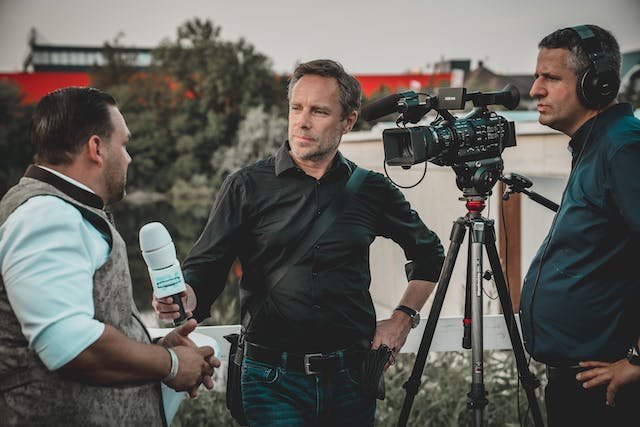In today’s digital age, the landscape of work is rapidly evolving, with remote positions becoming increasingly prevalent. The shift to virtual interviews presents its own set of challenges and opportunities, requiring a tailored approach to ensure success. Whether you’re a seasoned professional or new to the remote work environment, mastering the art of interviewing for remote positions is crucial for your career growth and satisfaction. In this article, we’ll explore invaluable tips and strategies to excel in remote job interviews, equipping you with the knowledge and confidence to thrive in the virtual hiring process.
Interviewing for Remote

Understanding Remote Interviews
Remote interviews are becoming the norm in our fast-paced digital world, where the convenience of connecting from afar is reshaping how we look at the job-seeking process. This new era of interviewing requires acclimating to a virtual setting where your communication skills can shine through the screen. It’s all about making a strong connection without a handshake, and ensuring your voice and qualifications are as clear as if you were there in person. Embracing this shift can set the stage for your success in landing the job of your dreams, no matter the distance.
Adapting to Virtual Setup
Gone are the days when every job interview meant a firm handshake and making eye contact in a polished office. Now, your digital handshake has to be just as strong. Adapting to a virtual setup means setting up your tech game in advance. Ensure your internet connection is stable, because nothing disrupts the flow like a choppy line. Make sure your camera and microphone work, so when it’s showtime, you’re good to go!
Besides tech, consider the background that appears on camera. A cluttered or distracting background might take the focus off you. Opt for a clean, professional look, with good lighting – think “home office,” even if it’s really just a corner of your living room. This attention to detail shows you’re serious and sets the stage for a top-notch virtual impression.
Importance of Communication Skills in Virtual Settings
In the world of remote interviews, where we can’t rely on handshakes or direct eye contact, how we communicate takes center stage. The virtual setting puts a spotlight on our words and our ability to express ourselves clearly. It’s not just about what we say, but how we say it that makes a difference. Good communication skills show you can articulate your thoughts and respond to questions with confidence, even when you’re not in the same room as the interviewer.
We also need to pay close attention to non-verbal cues, which can be trickier to convey over a screen. Making sure your body language is open and engaging, maintaining eye contact through the webcam, and showing enthusiasm with your facial expressions can all help bridge the physical gap. Remember, effective communication in these settings will help interviewers see you as a capable candidate who can thrive in a remote work environment.
Preparation Is Key
Diving into a remote job interview without preparation is like setting sail without a compass; you might drift off course. To increase your chances of impressing potential employers from afar, thorough prep work is a secret weapon. It’s not just about knowing your stuff, but also about making sure your tech plays ball when it’s showtime. So, roll up your sleeves and let’s look at what it takes to be fabulously prepared for your remote interview.
Researching the Company and Role
Before you hop on that video call, it’s key to dig deep and learn about the company you’re aiming to join. Dive into their website, check out recent news articles, and understand their culture, mission, and values. It’s like becoming a bit of a company detective; knowing what they’re all about can make you stand out.
But don’t stop there – get the lowdown on the job role, too. Try to figure out how your skills can solve their problems. A little homework shows you’re serious and can give you a huge edge in the interview. After all, who doesn’t want a team player who’s ready on day one?
Technical Setup and Testing
Getting your tech ready is a big deal before a remote interview. Make sure you have a stable internet connection, as you won’t want your first impression to be a lagging video or choppy audio. Test your microphone and webcam to ensure they work well. It’s not just about looking and sounding good; it’s about showing you can handle the tools of the remote trade.
Before D-day, have a trial run with the software your interview will be on. Zoom, Skype, or Google Meet – they all have different buttons and features. Get comfortable with the one you’ll be using. It’s like doing a test drive before a big race. You’ll feel calm and ready, knowing your tech won’t let you down when it’s time to shine.
Showcasing Your Value Remotely
In our increasingly digital world, nailing an interview from afar is as much about the dazzle as it is about the details. When you’re aiming to shine through a screen, it’s all about knowing how to serve up your experiences and skills on a silver, virtual platter. Let’s dig into how you can make your mark, even when you’re miles away from the hiring team, and prove that you’re the superstar they’ve been searching for—no handshakes necessary.
Highlighting Remote Work Experience
When you’re in the hot seat, talking to your potential future boss via a screen, standing out from the crowd is key. Show them you’re no stranger to the virtual office. Dive into your past remote roles, making sure to emphasize how your experience aligns with the job you’re after. Don’t just say you’ve done it; illustrate your impact with examples.
If you’ve juggled multiple projects from your kitchen table or coordinated a team spread across time zones, these are gold stars on your remote work report card. Talk about how you stayed connected, kept projects on track, and pushed the needle from wherever you were. Show your interviewers that you’re not just ready to work remotely; you’re already thriving in that space.
Demonstrating Self-Motivation and Time Management
When it comes to nailing a remote job interview, showing off your self-motivation and ability to manage time is like scoring the winning touchdown. Think about it: in a remote work environment, you’re the captain of your ship. You’ve got to sail it right without someone constantly checking the compass for you. So, let the interviewers know you’re not the kind who’ll binge-watch their favorite series when deadlines are knocking on the door!
Talk about how you structure your day, setting up tasks and knocking them down like dominos with precision. Share a story or two where you really had to stretch your motivation muscle to finish a project. And don’t forget to mention the tools you use to keep track of time, like that trendy app everyone’s talking about, or even a good ol’ planner. Employers love hearing that you’ve got your routines down pat – it’s music to their ears!
Navigating Virtual Interview Challenges
Even in the digital world, a smooth sailing interview isn’t always guaranteed. Unpredictable tech hiccups or the awkwardness of a video call can knock even the most prepared candidates off balance. But don’t worry; with a game plan in hand, you can steer through these digital waves like a pro. Let’s get into how to tackle these virtual challenges head-on and keep your cool under the digital spotlight.
Dealing with Technical Glitches
Nobody’s perfect, and neither is technology. When you’re in the zone, ready to impress in a video interview, a glitch can throw you off. But don’t sweat it! Being prepared for technical hiccups can actually show how adaptable and resourceful you are.
Have a backup plan like a second device ready to go, be it a laptop, tablet, or phone. Quick thinking in the face of issues is a skill employers love. And if tech gremlins still crash the party, stay calm. Apologize briefly and focus on solving the problem — your cool composure can be more impressive than a glitch-free chat. After all, problem-solving is key in remote work!
Handling Video Versus Phone Interviews
When you’re preparing for an interview that’s not face-to-face, you’ve got two main types: video and phone. Both have their own style, and it’s up to you to nail them!
Video interviews feel a bit more personal because you can see each other. Now, even though you’re not in the same room, it’s important to act like you are. Make sure you’re looking into the camera – it’s like making eye contact. And don’t forget to dress for success, just like you would for an in-person interview. One key tip: check your background! A messy room can be a distraction. Keep it clean and professional.
Phone interviews throw a different curveball. Since they can’t see you, your voice has to do all the work. Stand up while you talk; it gives your voice more energy. And, listen, we all love a comfy spot, but don’t let that comfy couch make your voice sound too relaxed. You need to sound alert and engaged.
Whatever method your interview is, practicing is golden. Do mock interviews with a friend or record yourself to hear how you sound. This way, you can fine-tune your voice and presence to make sure you leave a stellar impression.
Follow-Up Etiquette in Remote Settings
Once you’ve logged off from a virtual interview, your mission isn’t over. The follow-up is a critical step that can separate you from the competition and show your genuine interest in the role. The way you handle your post-interview communication is key, especially when your entire interaction with the company has been online. Let’s dig into how to do it right and keep that professional vibe shining through even after the interview has ended.
Sending Thank-You Emails
After finishing up a virtual job interview, you might be ready to sit back and wait for a response. But there’s a key step you shouldn’t skip: the thank-you email. It’s not just about good manners; it’s your chance to reinforce a positive impression with your potential employer.
Sending a thank-you email shows that you’re considerate and appreciative of the interviewer’s time. Be sure to personalize each email—mention something you discussed that piqued your interest, or elaborate briefly on an answer you gave that you feel could use more detail. Don’t forget, this email also serves to remind them of your enthusiasm for the role and your capability to work remotely. Keep it brief, professional, and send it within 24 hours of your interview to stay fresh in their minds.
Setting Virtual Follow-Up Meetings
When your interview wraps up, don’t just say your goodbyes and wait in the dark. Be proactive by arranging a follow-up meeting. This extra step shows that you’re eager and organized, two traits employers love in remote workers. It’s kind of like asking for a second date while you’re still on the first—it shows confidence and interest!
To set it up, simply ask for the best way to touch base about your application status. Whether it’s through email or a quick video call, this move not only keeps you fresh in the interviewer’s mind but also helps you stay on top of the process. Remember, following up is key in showing you mean business—from miles away.
Conclusion
Mastering the art of interviewing for remote positions is more than a skill; it’s a mindset. By embracing the unique challenges and opportunities presented by remote interviews, professionals can carve their path to success in the dynamic landscape of virtual work. With the right preparation, mindset, and strategies, acing remote job interviews is not just a goal but an achievable reality.

